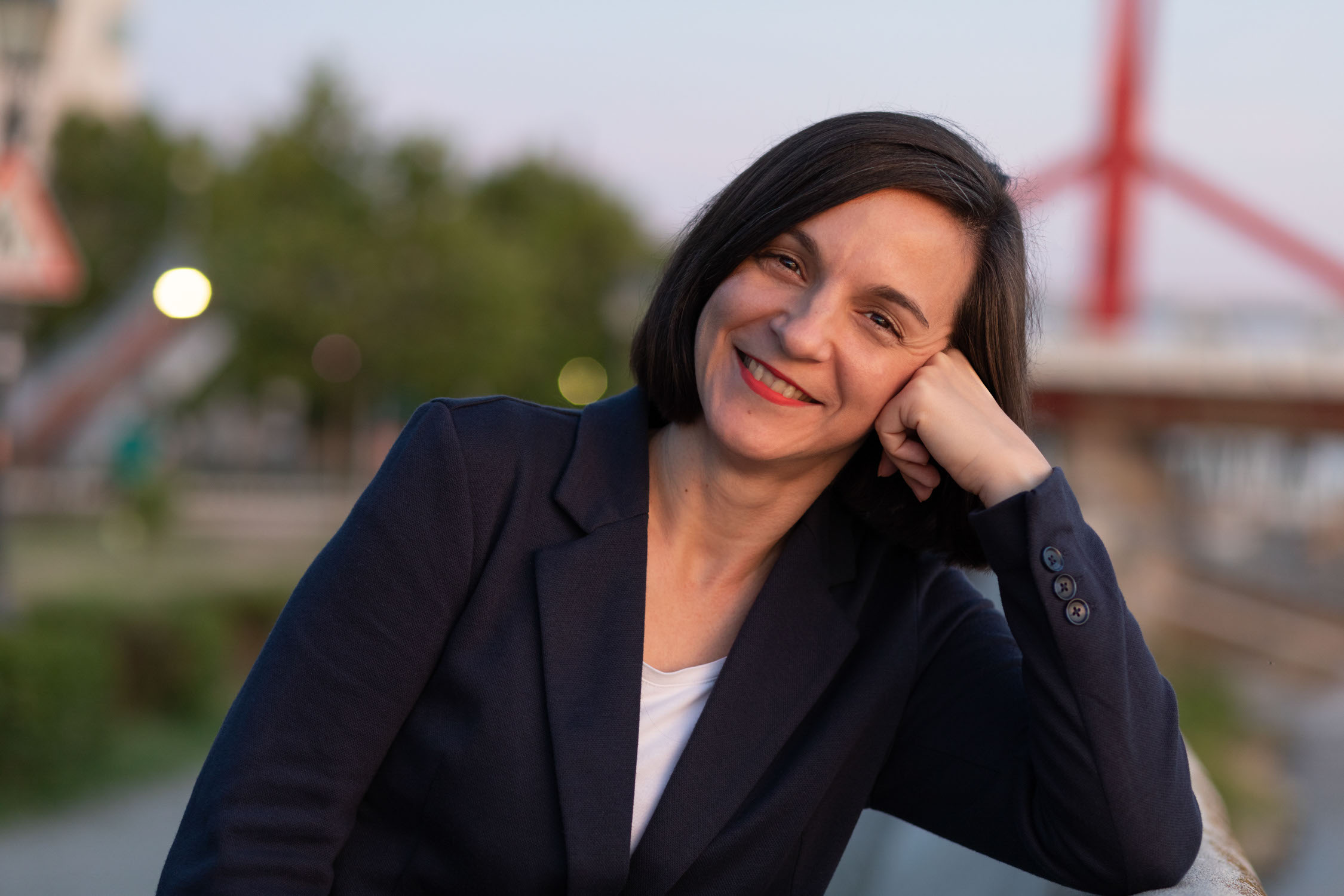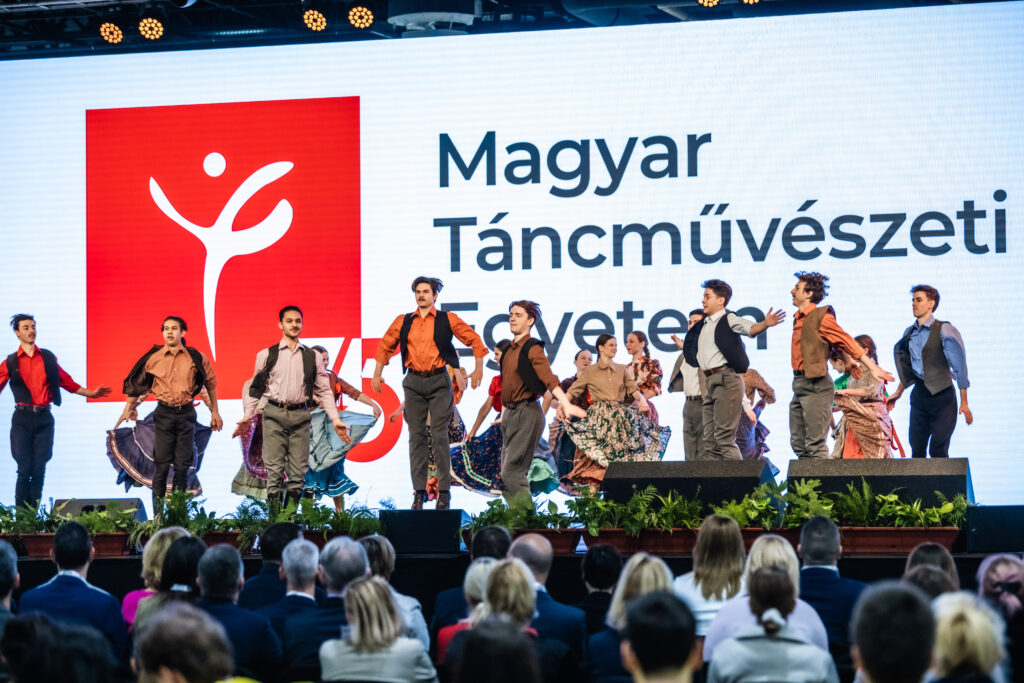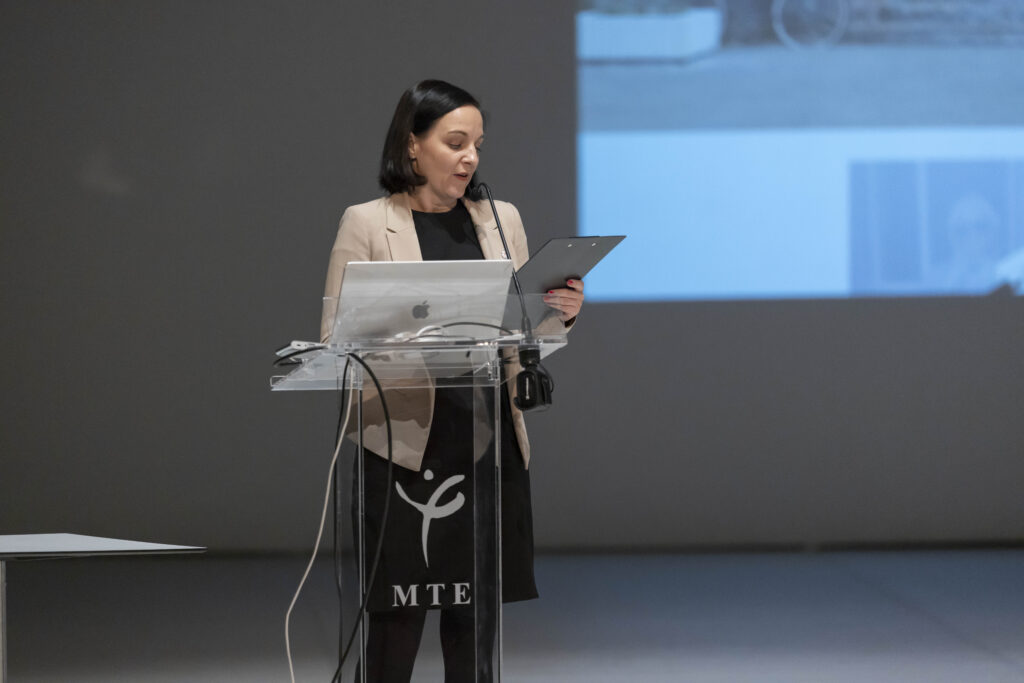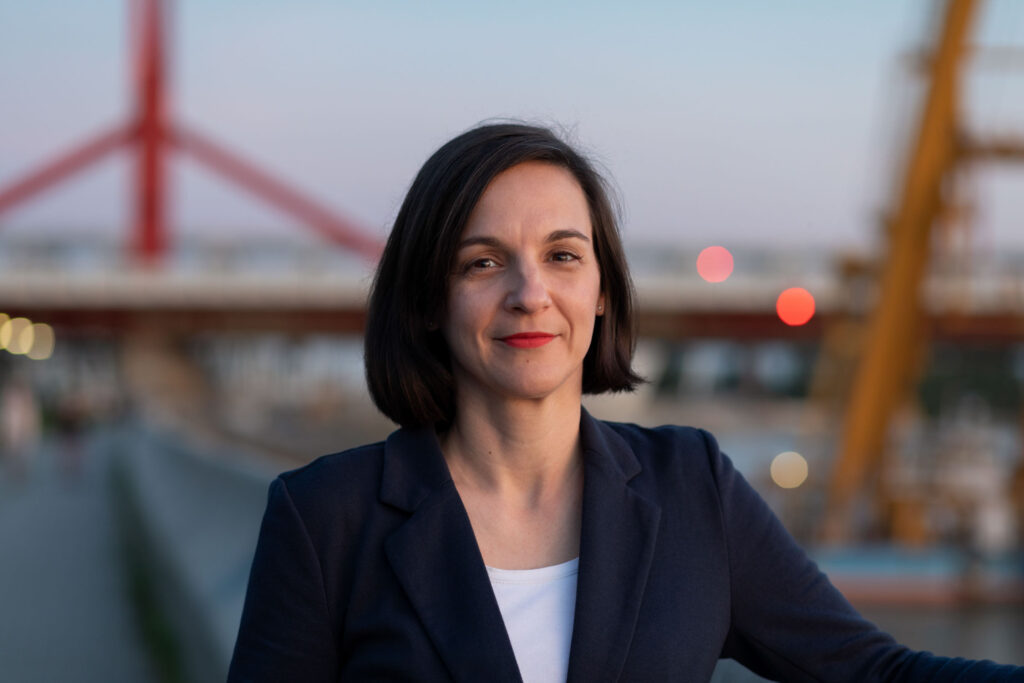
Magdolna Salát has been working for two months as the Vice-Rector of the Hungarian Dance University (HDU) alongside HDU’s Rector Professor Márta Fodor-Molnár. The former Director of Studies of the institution, who has been active in academia since 2008, considers the university as a jewel box, both a leading domestic and international institution. She believes it is a great honour for her to be able to contribute significantly to HDU’s community.
Her position requires a great deal of attention and energy, so her focus is naturally on HDU, which is celebrating its 75th anniversary this year.
What do colleagues call you?
Magdi. There was never a “director” or “vice-rector” title. I’m direct, so everyone behaves the same way towards me.

At the very popular Educatio exhibition, HDU folk dance students (Photo: Hype)
When you were elected and given the opportunity to help Professor Márta Fodor-Molnár with her work and support the advancement of the university, what was the thought or goal that made you feel it was worth accepting this challenge?
In the two years before, I had learned a lot about the university pretty well, so I knew that there are always interesting tasks here that need to be solved. I’m interested in the tasks, not in what’s written on my business card. From the tasks I’ve taken on so far, I felt that the Hungarian Dance University is heading in the direction of a goal set by the leaders and the governing body, but the goal can also be reached from a different direction more quickly. At the same time, it’s important for me to work on things I can learn from, and in fact, the two issues came together. I was given a high level of trust, I see a professional opportunity that will benefit the institution, and I must admit I’m very interested in the outcome. Because, and I haven’t mentioned this yet, I’m fundamentally performance oriented.
You mentioned trust. How did you earn it?
The trust was very flattering, and what was especially nice was that I felt it was a response to the work I had previously done here. I must admit it was a pleasant feeling because it’s rare when appreciation is expressed so directly.

Photo: Pál Csillag
Your appointment is special in a way that you didn’t come from the field of dance art. However, this is not without precedent, although it’s not very common at the Hungarian Dance University.
Yes, the previous rector didn’t come from the field of dance art either, as he was a lawyer, though he had worked in the profession, so he had a certain background and interest in dance history and the history of the institution. I consider the key tasks supporting the university’s operation as fundamentally managerial tasks. Based on this, I believe that higher education and leadership experience can be very important in several areas. At the same time, I see that the profession is represented by the excellent master and former prominent ballet artist, Rector Márta Fodor-Molnár and her outstanding colleagues.
How much does your previous career path and the experience gained there provide a different perspective? I ask this because the Hungarian Dance University, which is intertwined with a secondary school, while often almost displaying a company-like life, is quite a unique institution and educational culture.
Yes, exactly. That was my first impression, and it still stands. However, after getting to know it better, I use different words to describe the university and the impressions I’ve had here. It’s a wonderful place in the sense that it offers a holistic education. From the age of 10, it practically covers everything up to teacher training, and it carries all the unique characteristics of that. So, it maintains a secondary school to support its professional training at the highest level. This is quite rare in higher education, because if a university has a public education institution that it operates, it’s either a practice institution or it runs it as a service for its employees. This is also very unique, but for example, it’s also noteworthy that here, children are considered students starting from the age of 10. To answer your question: When I arrived here, I saw it as a magical world, a jewel box. Now, I can say, since I’m familiar with the international scene as well, that the Hungarian Dance University is a leading institution in this category. There’s not much like it in the world, offering such a diverse education with significant international presence, from ballroom dancing to classical ballet, and awarding diplomas. The Hungarian Dance University is unique, and it deserves to be supported with great appreciation because it truly deserves it!

Portrait photos: Heni Pálfi
Among the many tasks, which one will define your activities in the upcoming period?
I think the recently approved institutional development plan outlines these directions well. There’s a goal, which might not be the easiest to describe with indicators, for the institution to become an even more prominent higher education training centre in Europe by 2030. We’ve tried to describe a process in the institutional development plan that could lead to this. One very important pillar of this is internationalization, which doesn’t stand alone. It’s not coordinated by just a few colleagues, but it has to become the perspective of the entire institution. Beyond the well-defined tasks, all of this needs to bring about a wide-ranging change, as the focus on a new perspective has to be visible everywhere: in the services, in the career model, in the university’s core objectives and in many other areas as well. Everything that leads toward the goal must be integrated into a system, ensuring that it’s very noticeable for the students. Additionally, I would highlight one more important goal. It’s obvious and important to recognize that the world of higher education, if we only think about demographics, for example, will transform in the coming years. The trends are already observable. As Hungary’s only higher education institution awarding degrees in dance, it has an important mission to ensure that its core tasks, the training of dancers and dance teachers, are not compromised. At the same time, however, it is essential to find those additional components that will make the university’s operation not only sustainable but also put it on a visible path of growth and development.


